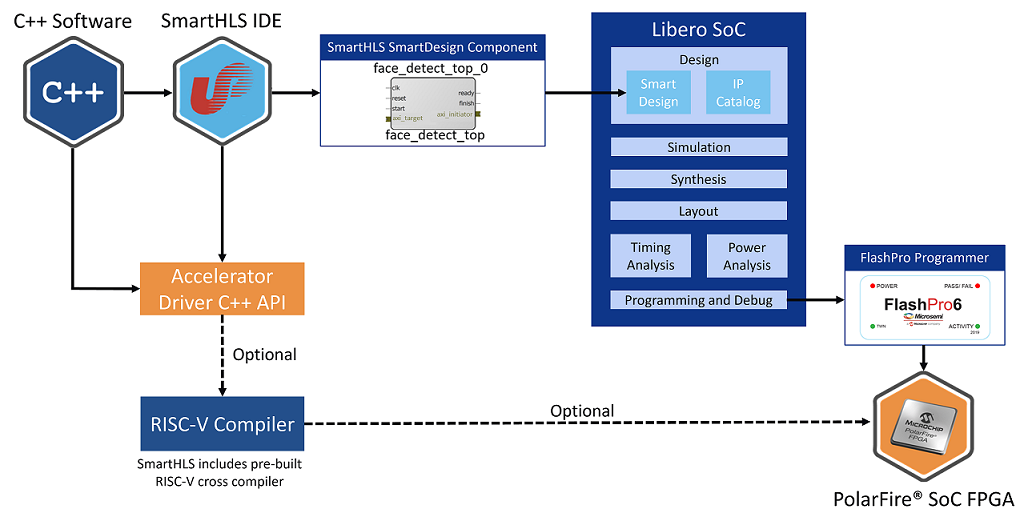3.5.1.2 SmartHLS Overview
(Ask a Question)SmartHLS™ accepts a C/C++ software program as input and automatically generates hardware described in Verilog HDL (hardware description language) that can be programmed onto a Microchip FPGA. The generated hardware can be imported as an HDL+ component into SmartDesign with a Tcl script that is also generated by SmartHLS. SmartHLS also generates a C++ accelerator driver API that can be used to control the generated hardware from an embedded processor. Optionally, SmartHLS can combine user code with the accelerator driver API and cross-compile it into a binary that can run on a RISC-V processor in an SoC design.

In a software program, user first needs to specify a top-level function (during project creation in the SmartHLS IDE or in the source code with our pragma, #pragma HLS function top ). Please refer to the Specifying the Top-level Function section for more details on specifying the top-level function.
Then the following button, Compile Software to Hardware can be clicked to compile software to hardware:

This will compile the top-level function and all of its descendant functions into hardware. The rest of the program (outside the top-level function) is considered as the software test bench, to give inputs into the top-level function and verify outputs from the top-level function (and its descendants). The software testbench is used to automatically generate the RTL testbench and stimulus for Simulate HLS Hardware (SW/HW Co-Simulation).
Alongside the generated hardware, the Compile Software to HLS Hardware button will also generate the C++ driver functions (see API Driver Functions for AXI4 Target), which can be combined with the software test bench and to produce code that can run on the processor in an SoC system and control the generated hardware. There are also optional SoC-related features offered by SmartHLS, such as generation of a reference SoC and automatic combination and cross-compilation of the software test bench and accelerator drivers for that reference SoC.
